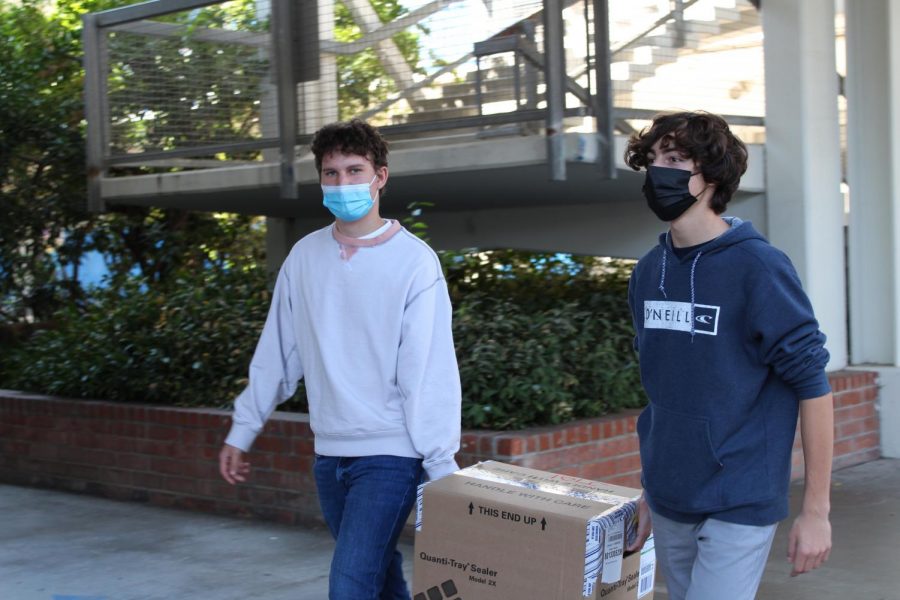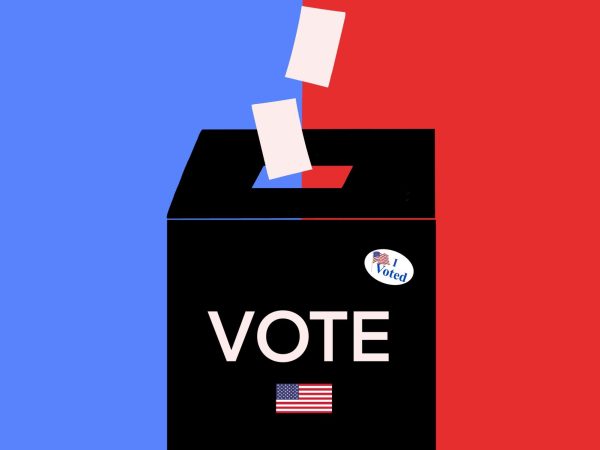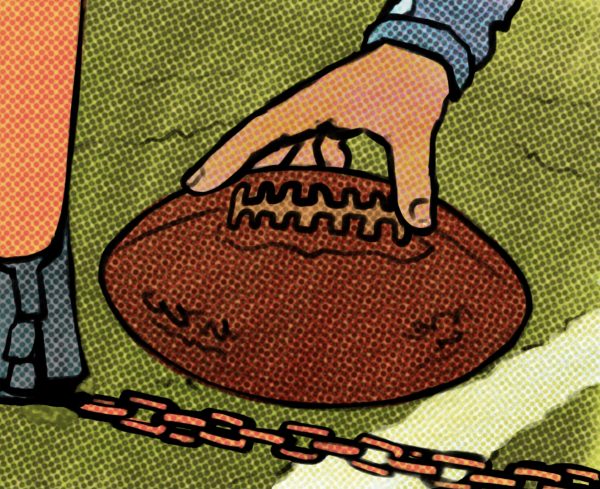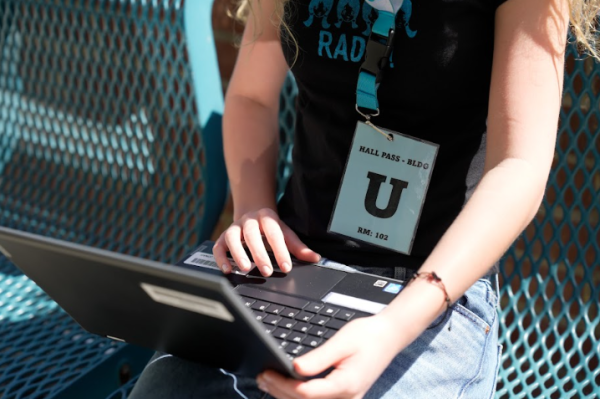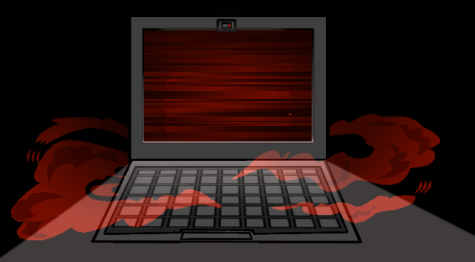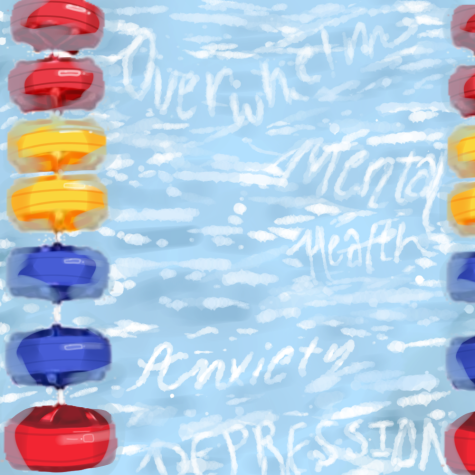All Right Pali, Time to Calm Down with the Masks
Masks have become a ubiquitous part of the COVID-19 pandemic. At first, we were told not to wear them to ration for healthcare workers. Then, they became a widespread necessity, with many masking up outdoors and indoors to protect themselves from the new virus. As research has begun to emerge, however, a clear position has been established: Masking outdoors does little to nothing, and can even be harmful — especially to students, who are now required to wear masks at all times in Los Angeles Unified School District (LAUSD) schools, as well as at Pali.
Currently, Pali requires students to wear their masks at all times except when actively eating and drinking. But this begs the question: Are these stringent mask requirements necessary?
According to a New York Times statistic page that is updated daily, cases in Los Angeles County are declining from a peak in mid-August, where averages remained in the 4,000-to-5,000-per-day range. September’s numbers tell a different story, with cases reaching a height of about 1,400 cases per day, a stark 65 percent decrease from months prior. With cases falling and new precautionary initiatives, like asymptomatic testing, being enforced by the school, Pali should consider revising their policies.
LAUSD made headlines in August when it unveiled its plans to tackle the coronavirus pandemic: tests every week, screening at the door and masks worn at all times. The district’s protocols were some of the most ambitious in the country, especially for a school district with more than 500,000 students.
So far, the rules have been quite effective. Sure, some students have inevitably contracted COVID-19, but Pali has seen only a small number of cases, with active ones being quickly contained. Many may credit this low number of cases to the school’s mask requirements, but does science support this assumption?
As many governors across the country in states like Texas and Florida fight to keep masks out of schools, the California Department of Public Health (CDPH) requires campus students and faculty to wear their masks while indoors. Interestingly enough, the CDPH doesn’t require — or even recommend — their use outside. Neither does the Centers for Disease Control and Prevention (CDC) nor the Los Angeles County Department of Public Health (LACDPH). So why are we requiring masks outside? Are these restrictions really necessary? If the goal is to “follow the science,” it paints a clear picture: These mask rules are not stopping the spread of COVID-19.
At Pali, masks are required during physical activity, even outside. The school’s mask guidelines dictate that the only time masks are not mandated is when students are “participating in an extreme exertion activity, or [playing] in a California Interscholastic Federation-Sanctioned Athletics Game/Match… Light exertion is not a reason for a mask not to be worn.” Again, this rule has no basis in science.
Upon reviewing the K-12 guidelines for mask wearing on the LACDPH website, no mention of “light” or “extreme” exertion is made. Even if LACDPH did recommend that schools follow these guidelines, they still don’t make sense outdoors. According to a BBC article published on April 22: “Fleeting encounters are highly unlikely to be long enough for enough virus to reach you.
Professor Cath Noakes, an airborne infection expert from the University of Leeds, says someone would have to cough right at you, at the moment you’re inhaling, for an infection to happen.” Although the article notes that Noakes “warns of friends spending a long time together outdoors and assuming they’re completely safe,” the measures being taken by LAUSD, such as required weekly testing, make outdoor interaction a much smaller likelihood of being dangerous.
Other sources agree with the sentiment that COVID-19 is less of a threat outdoors. According to an article written on April 19 from The Atlantic: “In outdoor areas, the viral spray is more likely to disperse. One systematic overview of COVID-19 case studies concluded that the risk of transmission was 19 times higher indoors than outside.” This makes it clear: While an indoor mask mandate is sensible, there’s no reason for masks to be worn when the coronavirus is 19 times less likely to spread outdoors.
When interviewed, Pamela Magee, Pali’s executive director and principal, shed some light on the reasoning behind the outdoor mask mandate. “The PCHS mask protocol is based on the LA County Department of Public Health recommendations. PCHS has implemented the outdoor mask requirement due to the density of people who congregate in the quad, covered eating areas and other outside areas,” Magee said. “Social distancing is challenging to implement and enforce outdoors at Pali; as a result, PCHS opted to require masks at all times both inside and out to ensure the safety of everyone on campus.”
While this explanation may make sense at face value, it begins to fall apart when looking deeper into the issue. The time that most students “congregate” outdoors is during lunch, when everyone inevitably has their masks off to eat. The reasoning behind the mandate also doesn’t make sense when looking at the specific language of the masking rules. The Pali rules state that “being on campus outside but not near anyone is not an acceptable reason to not be properly wearing a mask.” Why is this a rule when the goal is to eliminate virus spread in crowds?
Magee added: “On a personal level, I know it can be challenging to wear a mask all day long. I struggle with this, too. However, I believe it is important for us all to do everything possible to keep Pali students, faculty and staff healthy and safe.”
A vaccine mandate at Pali would make this a null point, likely rendering any school with such measures in place virtually COVID-19-free. Under these circumstances, a school (especially a school with a highly-vaccinated population) with a COVID-19 case would be the absolute anomaly.
The PCHS Board of Trustees has heard considerable public comment regarding the implementation of a school-wide vaccine mandate. California Governor Gavin Newsom announced earlier this month that students in the state’s K-12 schools must be vaccinated after the vaccines receive full FDA approval, a decision that appears imminent.
In the meantime, an all-times mask mandate can even be counterproductive. Dr. Benjamin Linas, a Boston University epidemiologist, echoed concerns of excessive mask wearing.
“If there is any hope of successfully implementing masks when we need them indoors during [the] Delta surge — then we cannot insist on masks when we do not need them, and we should not routinely round up when not certain,” he said. “Too much masking is real.” It’s clear that wearing masks outdoors does little to nothing, and is misleading to act like this practice has genuine benefits.
Some Pali students agree that the mask rules are excessive.
“I feel like that’s inherently unethical and it’s contradictory to many of the claims that the CDC has provided pertaining to the COVID-19 virus, specifically the delta strain,” Pali freshman Noah Saraf said. “To be honest, masks should be voluntary indoors if you’re vaccinated. Because what’s the point?”
Looking at the status quo, the numbers when it comes to the amount of people vaccinated in Los Angeles County are tremendous for LAUSD. According to the LACDPH, as of Sept. 27, about 64 percent of 12-15 year olds in Los Angeles have been vaccinated, with about a 80 percent vaccination rate amongst Palisades youth (12-15 years old.) Clearly, vaccination rates are already quite high, and with Newsom’s Oct. 1 vaccine mandate for California schools, those rates are only going to increase.
When the CDC, the highest authority of medical knowledge in the country, doesn’t recommend outdoor masking — even in schools — it’s easy to conclude that the policy may be grounded in unwarranted fear.
So, what is the logic behind the outdoor mask mandate? What scientific reasons exist to enforce stringent rules in an environment where everyone is protected against COVID-19 and reverification is being done every week to identify and contain the coronavirus cases? The mask rules are excessive, unnecessary and not based in science. Not to mention, they’re a drag.

Shane Masterson is a junior who has written for Tideline since his freshman year, and he’s thrilled to return! He primarily writes opinion and satire...
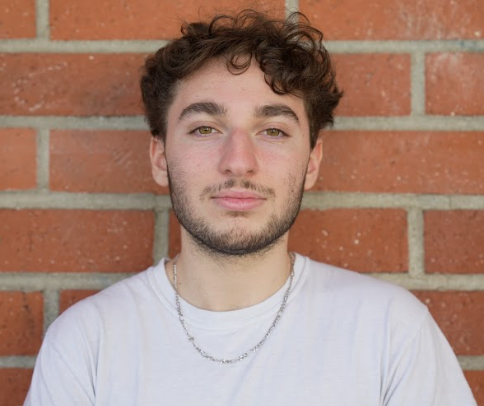
Jonah Bahari, a senior, is returning to Pali’s Journalism program for his third and final year. He is ecstatic to serve as the head of the graphics department...


